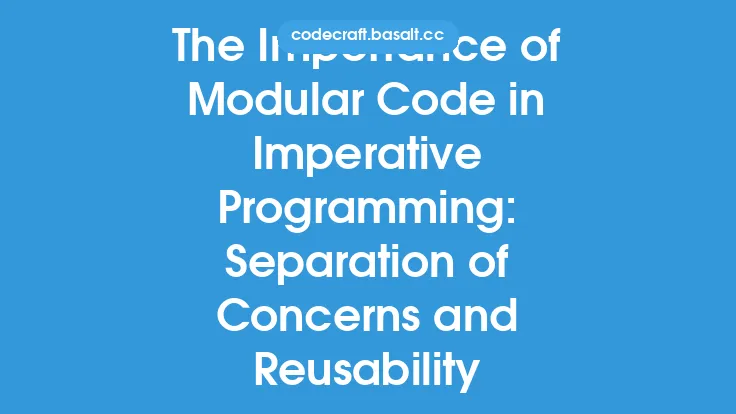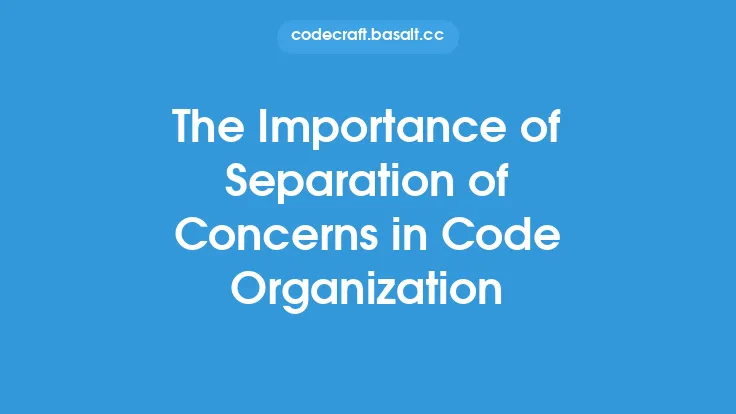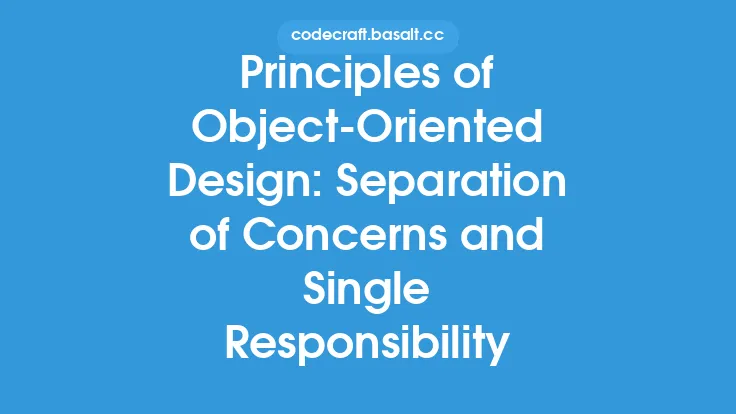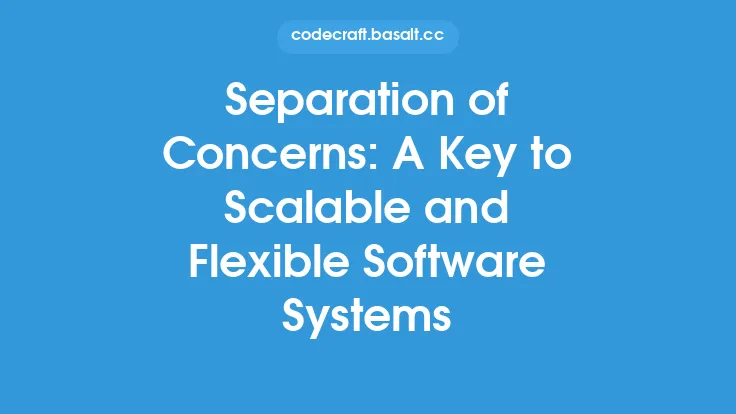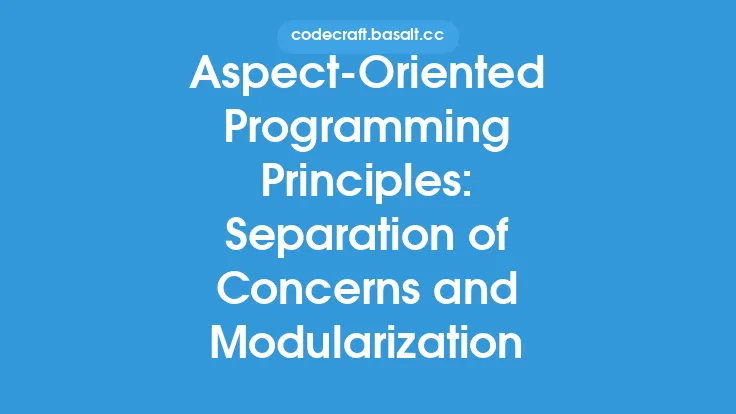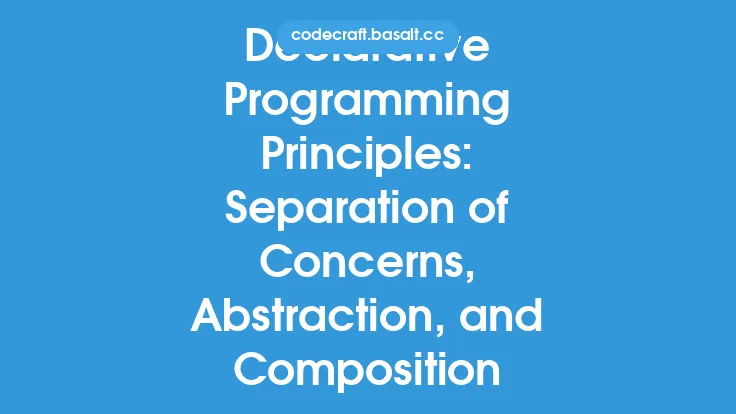Separation of concerns is a fundamental concept in software architecture that involves dividing a system into smaller, independent components, each responsible for a specific aspect of the system's functionality. This concept is based on the idea that a system should be designed to separate its various concerns, such as presentation, business logic, and data storage, into distinct modules or layers. By doing so, developers can create systems that are more maintainable, scalable, and flexible.
History and Evolution
The concept of separation of concerns has its roots in the early days of software development. In the 1970s and 1980s, software systems were often designed as monolithic applications, where all the functionality was bundled into a single executable file. However, as systems grew in complexity, it became clear that this approach was not sustainable. The concept of separation of concerns emerged as a way to address the complexity and maintainability issues associated with monolithic systems. Over time, various architectural patterns and principles have been developed to support the separation of concerns, including the Model-View-Controller (MVC) pattern, the Layered Architecture pattern, and the Service-Oriented Architecture (SOA) pattern.
Key Principles
The separation of concerns concept is based on several key principles. First, each component or module should have a single, well-defined responsibility. This means that each component should be designed to perform a specific task or set of tasks, and should not be responsible for multiple, unrelated tasks. Second, components should be loosely coupled, meaning that they should not be tightly dependent on each other. This allows components to be developed, tested, and maintained independently, without affecting other parts of the system. Finally, components should be designed to be modular and reusable, allowing them to be easily integrated into other systems or applications.
Architectural Patterns
Several architectural patterns support the separation of concerns concept. The MVC pattern, for example, separates an application into three interconnected components: the model, the view, and the controller. The model represents the data and business logic of the application, the view represents the user interface, and the controller manages the interaction between the model and the view. The Layered Architecture pattern, on the other hand, organizes a system into a series of layers, each responsible for a specific aspect of the system's functionality. The SOA pattern takes a more service-oriented approach, where a system is designed as a collection of services that communicate with each other to achieve a specific goal.
Benefits
The separation of concerns concept offers several benefits, including improved maintainability, scalability, and flexibility. By separating a system into smaller, independent components, developers can modify or replace individual components without affecting other parts of the system. This makes it easier to maintain and evolve the system over time. Additionally, the separation of concerns concept allows developers to scale individual components independently, without affecting the rest of the system. This makes it easier to handle increased traffic or demand, without compromising the overall performance of the system.
Challenges and Limitations
While the separation of concerns concept offers several benefits, it also presents several challenges and limitations. One of the main challenges is identifying the correct boundaries between components or modules. If the boundaries are not clearly defined, it can lead to tight coupling between components, which can make the system more difficult to maintain and evolve. Another challenge is managing the complexity of the system, as the number of components and interactions between them can increase exponentially. Finally, the separation of concerns concept can also lead to increased overhead, as each component or module may require its own infrastructure and resources.
Real-World Applications
The separation of concerns concept has been applied in a wide range of real-world applications, from web applications and mobile apps to enterprise software systems and cloud-based services. For example, a web application might use the MVC pattern to separate the presentation layer from the business logic and data storage layers. A mobile app might use a layered architecture to separate the user interface from the business logic and data storage layers. An enterprise software system might use the SOA pattern to separate the various services and components that make up the system.
Technical Implementation
From a technical perspective, the separation of concerns concept can be implemented using a variety of programming languages, frameworks, and tools. For example, a developer might use a programming language like Java or C# to create a modular, component-based system. They might use a framework like Spring or .NET to implement the MVC pattern or the Layered Architecture pattern. They might also use tools like Docker or Kubernetes to manage the deployment and scaling of individual components or services.
Conclusion
In conclusion, the separation of concerns concept is a fundamental principle of software architecture that involves dividing a system into smaller, independent components, each responsible for a specific aspect of the system's functionality. By separating concerns, developers can create systems that are more maintainable, scalable, and flexible. While the concept presents several challenges and limitations, it has been widely adopted in a range of real-world applications, from web applications and mobile apps to enterprise software systems and cloud-based services. As software systems continue to evolve and grow in complexity, the separation of concerns concept will remain a critical principle of software architecture.
